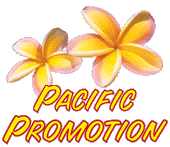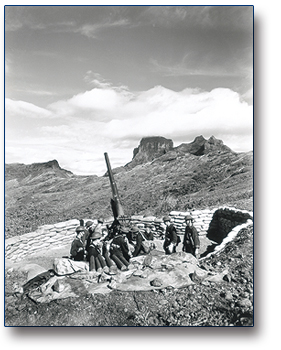Shop
Videos
Robert Wan
Tahitian Black Pearl
Authors
BOBCAT
About us
Contact us
Links
Home
|
The BOBCAT Tourist Center is a project devoted to the presence of the US Navy and Army in Bora Bora during the Second World War.
In fact and in spite of themselves, following the attack of Pearl Harbor on December 7, 1941 (*), the US Command, shaken by this terrible aggression, was immediately obliged to take part in the battles that were ravaging Europe. Their entrance into the war turned this conflict into World War II.
The BOBCAT Tourist Center has as its objective to relate this spellbinding epic of the 5000 GI's who stayed in Bora Bora over a period of five years. The GI's presence, did not only assure the delicate problem of supplies and of the maintenance of the Allied fleets, but they also helped to prevent the Japanese from attacking from the South, threatening New Zealand and Australia, then Tahiti and her Islands.
(*) On the 7th of December 1941, fortified by their alliance with the Germans and by the Antikomintern Pact of 1936 and by the Friendship Pact with the Soviet Union signed in April 1941, the Japanese forces attacked the American military base of Oahu by air and in a space of two hours, they inflicted terrible losses to the largest US navel base in the Pacific. The Japanese planes had taken off from six aircraft carriers; they sunk, set on fire and destroyed the US men-of-war lying at anchor, one of which was America's pride, the famous USS Arizona along with the 1,177 men making up its crew.
Inspiration can be found in what the US has done in Hawaii
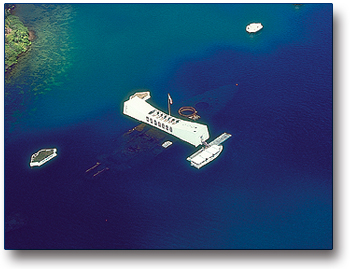 |
At Pearl Harbor in Honolulu and in order to honor the thousands of US soldiers who lost their lives that day, a museum - the USS ARIZONA MEMORIAL - has been raised on the remains of the ships that were sunk. Everyday, visitors from all nations come there to gather at the memorial with great emotion. Then, they watch the screening of a documentary film that relates all of the events of the war in the Pacific. This Museum allows families, friends and everyone else not only to remember history, but also to mourn those who paid the fight for our freedom with their lives.
|
|
History of the creation of the USS ARIZONA MEMORIAL
The idea to create the"USS ARIZONA MEMORIAL" took form in 1943 during the hostilities. But it was officially developed in 1950, at the occasion of the nine-year anniversary of the attack of Pearl Harbor. Admiral Arthur Radford, Commander in Chief of the US Navy, placed a mast and the US flag on USS Arizona; it signified that the ship, in a sentimental way, was still in operation.
President Dwight D. Eisenhower, approved the creation of the USS ARIZONA Memorial in 1958, the facility was inaugurated in 1961. The project was sponsored by private donors and by public funds voted by the US Congress.
Today, with more than 1,500,000 visitors each year, the USS ARIZONA MEMORIAL is one of the most frequently visited attractions by tourists in the Hawaiian islands.
|
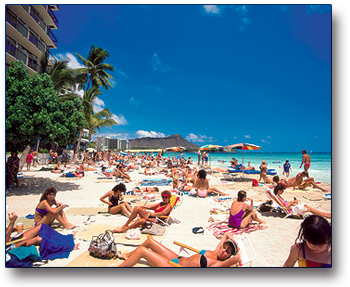
|
Another beautiful sunny day in paradise on the beach at Waikiki, Honolu Hawaii
|
|
America at war intervened on all fronts, as well as on the fabulous island of Bora Bora, known under the name of "the Pearl of the Pacific".
|
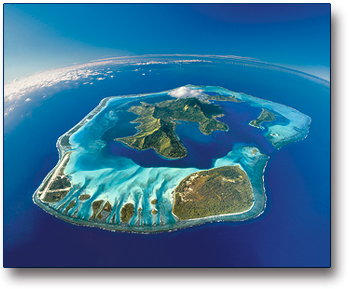 |
If one is to be glad that the island of Bora Bora was not the theater of confrontations during the presence of the US military base, it remained all the same the kingpin that served America in its steps to make the word "freedom" become a reality for the "land of Man".
Among the hundreds of islands that are found in this area, this island was chosen by the US Command to provide supplies to the US forces in the South Pacific.
To keep it secret, the project for this base was named "BOBCAT".
The Americans installed a depot of gas and an ammunition dump, a base of seaplanes and the needed equipment to anchor their warships in the Vaitape roadstead. Must it be pointed out that among the 118 islands that make up French Polynesia, it was only Bora Bora that had the ideal features to install an US military base ?
|
|
Amongst other reasons, the island of Bora Bora was chosen because of its enormous interior lagoon which could only be entered through a single pass that could be easily controlled, especially when considering the threat of submarines.
|
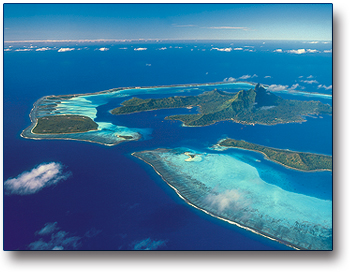
|
|
In order to fortify the base, the Americans who feared a Japanese attack, decided to install at strategic places in the mountains eight enormous artillery cannons, firing seven-inch shells,
When they saw that the fresh water conveyance of the island was not sufficient to supply the troops, they undertook engineering work to settle this crucial problem.
Not only did they have to find a solution for the road network that was insufficient to handle the heavy US Army vehicles, but they also had to construct a naval wharf, a power plant and finally a landing runway which was to become French Polynesia's first airfield.
Obviously, Bora Bora did not have the manpower capacity required to assure the installation of this military base; more than 5,000 GI's were therefore posted to the island over a five-year period, thus increasing the size of the population by five.
For the U.S.A., BOBCAT was an important experience. When facing emergencies, the organization of the base was not without problems. For example, the barges that served to unload the heavy goods, had been stored in the very depths of the ships' holds; to surmount this problem, the US Engineering Corps found itself obliged to hastily construct new barges in order to be able to unload these heavy vehicles. All the difficulties that they encountered when they constructed the BOBCAT base, allowed them to draw conclusions about the constructions of other bases, notably those in Guam and in the Philippines.
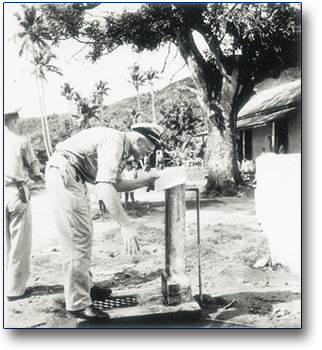
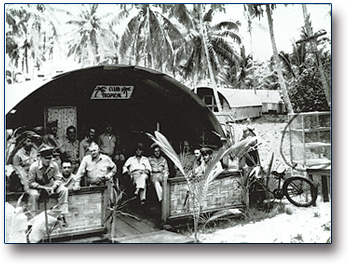
|
|
Before we continue our file, it once again will prove useful cast an eye on some of the major events of that time.
President Roosevelt called the 7th of December 1941 "a day of infamy". The Unites States, which had declared itself to be neutral, officially entered this conflict that had already ravaged the old continent for two years, thus causing it to become "World War II".
The United States finally intervened in two main theaters of operations, Europe and the Pacific.
During this time, Japanese forces occupied Thailand, Hong Kong, the Philippines and Guam. Their expansion then continued on to Borneo, Malaya, Celebes and New Guinea. Singapore capitulated in 1942. In March, Indonesia and Burma were conquered thanks to the fall of Bataan and Corregidor. The Japanese continued to advance in the Aleutian Islands, the Solomon Islands and New Guinea. Their planes bombed Australia and Ceylon; they then attacked Alaska and the Canadian island of Vancouver.
In just eight months time, Tokyo had managed to become the Master of half of the Pacific and now controlled more than 90% of the world production of rubber, 75% of tin and it also laid its hands on enormous reserves of gas.
As early as the spring of 1942, America marked an end to the Japanese tide by two victories by the US fleet, in the Coral sea and at the Midway Islands; the fleet was commanded by Admiral Nimitz.
The US counteroffensive was concentrated on Guadalcanal and marked the beginning of the turning back of Japan's strategic situation. In 1942, US submarines destroyed one million tons of Japanese ships.
In 1942, the difficult conquest once again of Guadalcanal and of New Guinea (in part by Australian troops), diverted Australia form the threat of a Japanese invasion, this allowed the Americans in 1943to launch two decisive offences on the Aleutian Islands, under the command of Admiral Nimitz. So it was from the US bases in New Caledonia and in Vanuatu, formerly the New Hebrides, that the Americans were able to launch their offences in the direction of the Philippines and the Gilbert Islands, the Mariana Islands as well as the Caroline Islands. The conquest of Saipan and of Guam allowed the United States to place the very capital of Japan under its fire.
This defea was deeply felt and provoked the resignation of the Töjö Cabinet. When General MacArthur took back New Guinea, the Moluccas, and the Island Leyte in the Philippines, the Japanese fleet suffered such a disaster that it would never be able to rise up again.
Due to the very size of the US offensive, the Japanese Command decided to strengthen its position in the south of China, to facilitate the supplying of its troops in Burma and Malaya...
In 1944 the Allies made a spectacular breakthrough against the Germans in Africa as well as in Soviet Union, the Japanese backward surge in the Far East was made at the price of a tough re-conquest by the Allies. Japanese forces resisted with determination, they did not count their human losses and based their resistance on the ideology of voluntary sacrifice, with the famous Kamikazes.
January 1945: MacArthur attacks Luzon, the largest island of the Philippines, entering Manila after three weeks of difficult battles. Nimitz lands in Iwo Jima, then in Okinawa where a terrible battle takes place. Staline then denounces the Japanese-Soviet neutrality treaty which provokes the resignation of General Koiso's Cabinet. He is replaced by Admiral Suzuki.
The Japanese resisted, in spite of a no hope situation; they had no more fleet, the country was under a heavy air offensive by the Allies who met no longer met with any opposition.
This was when President Harry S. Truman succeeded Roosevelt and decided to use the atom bomb against Japan.
On the 6th of August, the first nuclear bomb, tested in secret, destroyed Hiroshima; three days later, another one razed Nagasaki.
At the same time, the Soviet Union declared war on Japan and signed an alliance treaty with China.
On the 14th of August, the Japanese government declared that they accepted an unconditional surrender.
On the 2nd of September 1945, the Pacific war came to an end; the solemn act of capitulation was signed on the US armor-plated man of war, theMissouri, in the harbor of Tokyo. Aboard, one found General MacArthur and Marshal Leclerc who represented France.
The US war effort was considerable; In 1939, the Army counted 190,000 men and 330 tanks. At the end of the war, the US Army counted 11 million soldiers. They had supplied to the coalition against the Axis, 96,000 tanks, 61,000 cannons, 2,300,000 trucks, 21 million tons of ammunition, 296,000 planes. To maintain this war effort, civilian factories in the U.S.A. had made an important contribution.
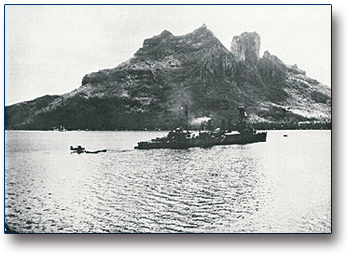
|
|
To illustrate this file, one can remember that during its period of operation, BOBCAT provided 181 ships with fuel. 193 ships were supplied with fresh water, thanks to circuitous recycling and water pipes set up for the circumstances. 45 ships were repaired, a half a dozen of which were major works. 1,200 ships were loaded and unloaded, which represented 50 tons of cargo. The activities on the US base in Bora Bora were maintained over a five-year period, in the course of this time, one could count the passage of twenty thousand persons coming from the US ships.
|
|
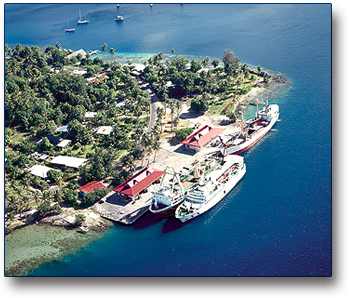
|
The wharf in Farepiti, which is still in use today, was constructed and inaugurated by US forces on the 30th of April 1943. The same applies to the Motu Mute airport, which saw its first landing on the 17th of March 1943.
|
|
Apart from a couple of books and important works that bear witness to this formidable epic, all that remains to us today as a souvenir of this period is the airport of Motu Mute, the quay of Farepiti, the eight cannons set up in the mountains and some anchors left by the roadside. Apart from this, there is nothing left to remind us that the island of Bora Bora did indeed largely participate in the war efforts deployed by the United States during the Second World War.
|

|
|
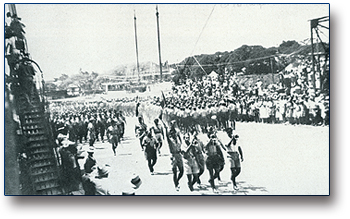
|
It is not unnecessary to remind one that Tahiti, despite the distance from metropolitan France and the effects of disinformation, as soon as it was notified of his "call of 18th of June 1940", ranged itself along the lines championed by General De Gaulle to fight against the nazism, rather than to collaborate with the enemy.
|
|
The goals of this file
|
The matter is that of the creation of the BOBCAT TOURIST CENTER in souvenir of the US presence in Bora Bora and the role played by French Polynesia during the Second World War.
Numerous are those who are surprised to learn that the name "Bora Bora" was better known to Americans than the name "Tahiti" and this is why a large number of the Anglo-Saxon visitors who travel to Bora Bora are in fact on a pilgrimage looking for the traces of their ancestors.
The object of this file is not to demonstrate the cultural interest -, everyone will understand that - but is to provide explanations on feasibility of the project at the economic level by showing the mechanisms on which the operation of this facility rest.
In the same way as Arizona Memorial in Hawaii, the BOBCAT TOURIST CENTER is an audiovisual facility composed of six movie theaters, the biggest of which can cater to 150 persons, whereas the other five can seat 30 persons.
Each theater will be decorated with enlarged photos on the walls to remind visitors of the epic themes.
|
|
BOBCAT TOURIST CENTER presentation.
|
The island of Bora Bora lies 250 kilometers to the North of Tahiti. Living in an Eden-like environment, its 6,000 inhabitants essentially make their living thanks to the tourist industry. Must one add that insofar as the number of visiting tourists is concerned, Bora Bora is indeed the spearhead of the Polynesian tourist industry.
In fact, Bora Bora is the first destination for visitors on a trip to French Polynesia. With 49,329 visitors in 2004, Americans make up the main nation to visit the island. The French come in at the second position with 19,016 vacationers, the Asian market taking third place with 15,712 tourists and finally one finds the Italians who numbered not less than 8,000 visitors.
|
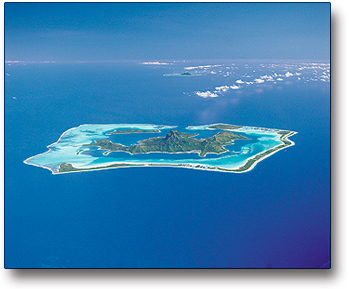 |
|
As we have said earlier, the name of Bora Bora is still very well known in the USA. This reputation is due to a large extent to the presence of the GI's on the island during World War II.
Naturally, the beauty of the land and the island's extraordinary lagoon is an invitation for visiting tourists to indulge in sports and water-based activities. However, given the never-ending increase in safari mountain excursions with 4x4 vehicles, one can only but deduce that a large number of visitors are keenly interested in the historical sites where the seven-inch cannons were left by the Americans at the end of the hostilities.
|
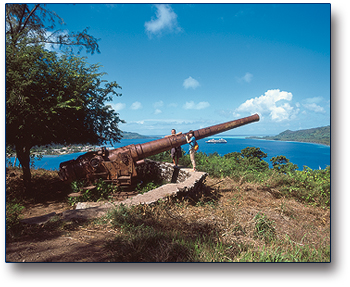
|
The absence of a historic presentation of the US presence in Bora Bora during World War II is sorely felt.
This is why the project structured on the concept of a BOBCAT TOURIST CENTER is unquestionably of a cultural interest, regardless of how beautiful a tourist site might be in itself.
|
|
A short description of the BOBCAT TOURIST CENTER is in order.
|
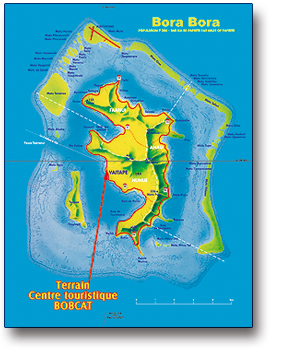
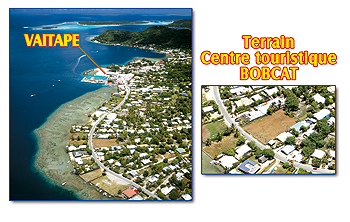
|
|
Location
|
The property on which the project is to be realized is located on the mountainside at the edge of the circle island road over 35.5 meters in length, at some 500 meters from the wharf facilities situated in Nunue, Bora Bora. The land has a surface area of 1,622 square meters.
|
|
Commercial lease
|
This property is the subject of a commercial lease with a promise to sell entered into by the owner and BOBCAT Company.
|
|
General presentation of the BOBNCAT TOURIST CENTER
|
|
The meaning of the word "BOBCAT"
|
BOBCAT was the secret code that the Americans had given in 1942 to the project of a military base in Bora Bora. Naturally, we have kept the code to designate the Museum dedicated to the US presence in Bora Bora.
|
|
The site
|
BOBCAT TOURIST CENTER is made of :
a) A parking lot for three 50-seat passenger buses plus seven spaces for private cars.
b) On the left, a reception area where the "OS2U Kingfisher" seaplane will be stored and to the right, a snack-bar which will be decorated exactly as the US Officers" club of the BOBCAT base.
c) A concrete building, 25 meters long x 17 meters in width on two levels. With, on the ground floor:
- Facilities for five small picture houses
- A comfort station for gents and ladies, as well as for disabled persons, with 5 toilets, 3 urinals and 4 wash-basins.
- A Management and secretarial office, as well as facilities to handle the admission tickets.
- Two commercial boutiques, one for the Museum's souvenir products and the other for jewels.
d) On the upper floor, a 150-seat movie theater has been planned with a large stage in front of the screen in order to enable this room to be converted into a showroom or a meeting room or again, a convention room. Next to the picture-house, there will be a small meeting room where the members of the BOBCAT Association can meet in small committees.
e) A small technical building at the back of the property on the mountainside will provide for the storage of the BOBCAT TOURIST CENTER's power and technical equipment. It is in this building that the backup electrical generating plant will be located.
f) The snack bar of the BOBCAT TOURIST CENTER will be installed to the left of the façade of the building. An awning will enable tourists to move about in the shade or to keep out of the rain when they walk from the snack bar to the picnic area located under the KINGFISHER which hangs above the facilities to the right at the entrance to the building.
|
|
KINGFISHER OS2 VERSION VS310
|
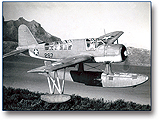
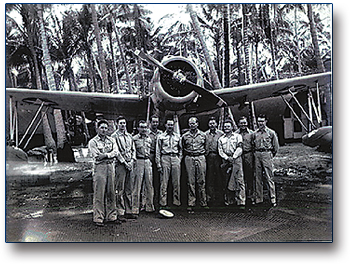
|
The KINGFISHER OS2U was to become the VS310. This seaplane was used by the US forces to carry out reconnaissance flights. In this regard, in the name of the Association that presides over the creation of the BOBCAT TOURIST CENTER,
I appeal to those persons who could assist us in finding this plane to make themselves known by sending an e-mail to :

|
|
Work schedule for the BOBCAT TOURIST CENTER operations
|
The BOBCAT TOURIST CENTER will open 7 days a week except for the following holidays: 1st of January, 1st of May, 14th of July, 1st of November and 25th of December.
- Mornings: from 8:00 a.m. to 12:00 a.m.
- Closed for lunch from 12:00 a.m. to 1:00 p.m.
- Afternoons: from 1:00 p.m. to 5:00 p.m.
|
Work time
|
In order to enable the Museum to operate 7 days in a row, two teams will be set up, each one totaling 36 hours of work per week, taking into account work on Sundays (double pay).
|
TAHITI BOBCAT CENTER Activities
|
The TAHITI BOBCAT CENTER will have two guided tours in the morning and two others in the afternoon.
First guided tour of the morning
8:00 am to 8:30 am Guided visit of the BOBCAT TOURIST CENTER
8:30 am to 8:45 am A pause at the Center's Boutique
8:45 am to 9:00 am Getting seated in the movie theater for the screening of the film
9:00 am to 9:50 am Screening of the film
9:50 am to 10:00 am Exit of the film goers, stopover at the snack
Second guided tour of the morning
10:00 am to 10:30 am Guided visit of the BOBCAT TOURIST CENTER
10:30 am to 10:45 am A pause at the Center's Boutique
10:45 am to 11:00 am Getting seated in the movie theater for the screening of the film
11:00 am to 11:50 am Screening of the film
11:50 am to 12:00 am Exit of the film goers, stopover at the snack
First guided tour of the afternoon
01:00 pm to 01:30 pm Guided visit of the BOBCAT TOURIST CENTER
01:30 pm to 10:45 pm A pause at the Center's Boutique
01:45 pm to 02:00 pm Getting seated in the movie theater for the screening of the film
02:00 pm to 02:50 pm Screening of the film
03:50 pm to 03:00 pm Exit of the film goers, stopover at the snack
Second guided tour of the afternoon
03:00 pm to 03:30 pm Guided visit of the BOBCAT TOURIST CENTER
03:30 pm to 03:45 pm A pause at the Center's Boutique
03:45 pm to 04:00 pm Getting seated in the movie theater for the screening of the film
04:00 pm to 04:50 pm Screening of the film
04:50 pm to 05:00 pm Exit of the film goers, stopover at the snack
The first circuit of the visit will begin from 8:00 am to 8:45 am during which the visitors will be invited to choose the themes of the films that will be shown at the ground floor level. They will then be invited to come up to the first floor (with a stopover at the Boutique) where the main film relating the war in the Pacific and installation of the BOBCAT base will be shown. The showing of the film will begin at 09:00 am for a duration of 45 minutes. After the film showing, clients can visit the snack bar prior to resuming their trip for the day.
The same itinerary will be organized from 10:00 am to 12:00 am, from 01:00 pm to 3:00 pm and from 3:00 pm to 5:00 pm.
|
Reservations
|
- On Friday evenings and Saturday evenings only, the picture house will be opened to the public without any reservations to enable the screening of mass audience films from 7:00 pm to 11:00 pm.
- All of the entries will be subject to reservation. Clients who turn up without reservations run the risk of not finding any available seats for the film showing. Reservations can be made by telephone and through the Internet with secure payment. The reservation module will take into account seating arrangements for each seat in the movie theater.
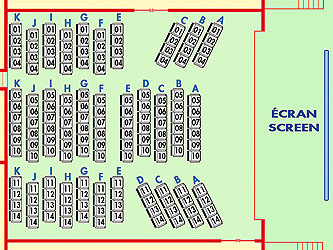
|
Rental of the showroom
|
For all seminars, meetings or conventions, the movie theater can be rented on condition the date is set three (3) months in advance, so as to avoid any blockage in the sale of seats on this occasion. Of course, if the rental takes place during a time-frame outside of the BOBCAT TOURIST CENTER's operating hours, the reservation period can be scaled down to less than a month.
|
Organizing events at the Museum
|
We have seen earlier that the activities of the BOBCAT TOURIST CENTER are scheduled by periods of two hours. Upon arrival, clients will have 45 minutes to learn which of the films are to be shown on the ground floor and they will have time to do their purchases in the boutique; they may have a tourist guide to go with them. They will then have 15 minutes to get to the big movie theatre where the main film will be shown (45 minutes). At the end of the screening, they may quench their thirst or have a meal at the snack bar before they continue on to a new excursion.
The above program will take place four times a day, seven days a week.
However, it is also possible to at the demand of clients to adjust the program of films shown so that cult films that have been shot in French Polynesia or Bora Bora may be screened. for example, films that may be considered for showing are the following:
- Murnau's "Taboo"
- Mutiny on the Bounty N°1 (Trevor Howard)
- Mutiny on the Bounty N°2 (Marlon Brando)
- Mutiny on the Bounty N°3 (Mel Gibson)
- Hurricane
- Moana - child of islands
|
The BOBCAT TOURIST CENTER is respectful of nature
|
- We will carefully limit our power consumption and as far as possible use solar energy with the help of solar panels positioned on the roof of the Museum.
- All the rooms, exposition halls and movie theaters will be air-conditioned with a central chilling unit located on top of the technical room.
- The treatment of used water will be handled by the water borne sewage system of the local district of Bora Bora.
|
Two entities- The BOBCAT Association and SARL BOBCAT
|
The goal of the BOBCAT association is to become itself the owner of all the material concerning the Museum and to place this at the disposal of a commercial company that will run the Museum in accordance with the commercial rules established in French Polynesia.
- Resources of the BOBCAT association
a) In consideration of the operating of cinematographic movies by the BOBCAT TOURIST CENTER, SARL BOBCAT must transfer to the association a monthly commission of 3% calculated on the income from admissions to the Museum.
b) According to its Articles of Association, the association must request the payment from its members of their dues, seek the granting of territorial and municipal subsidies as well as try to obtain donations.
|
- Objects of the BOBCAT association
|
To restore, take stock of or acquire the exposition material of the BOBCAT TOURIST CENTER
a) Maintain the military sites created by the Americans during their stay in Bora Bora. (ammunition dumps, cannons and anchors). Recreate the GI atmosphere in the halls of the Museum
b) Maintain the military sites, enter into contracts with local companies.
c) Organize seminaries under the aegis of the association in order to bring together tourist-industry related partners in Bora Bora, the administration, companies, people in charge at the municipal and political levels.
|
- The Association's buildings.
|
SARL BOBCAT gracefully puts at the disposal of the association two offices, one for the needs of a secretary and one meeting room to receive the members of the association.
|
SARL BOBCAT
|
SARL BOBCAT is a commercial company, controlled by current commercial rules in French Polynesia. The company must abide by the specifications imposed upon it by the association and should it not respect the contract; the Company may lose the profits on the film activities at the BOBCAT TOURIST CENTER, and should this happen, said profits could be granted to another operating company.
|
Donations,
|
The BOBCAT TOURIST CENTER does not present itself as an ordinary museum, with the exception of the numerous photos to be exposed in the audiovisual rooms on the first floor.
The principle of BOBCAT TOURIST CENTER is its concept; that is to relate history through several documentary films, the principal film of which will be shown in the main movie theater. This document will shed light on the enormous history of the war in the Pacific, with, in the background, the secret alliances that were struck up between the US Command and the Free French forces that were embodied in their founder, General De Gaulle.
A wonderful history, unknown but which deserves to be told by expert historians in the matter, from the American point of view as well as from the French viewpoint.
To carry out this project, "Pacific Promotion" Company, the chief architect of the films, requires financing.
Proper financing to realize the films would ensure the success of the creation of BOBCAT TOURIST CENTER.
For the time being, the government of French Polynesia has given its agreement for the building permit.
For the moment, we are trying to obtain the necessary funds within the BOBCAT association in order to realize the films as well as a full-size duplicate of the OS KINGFISHER plane that will be exposed on the front wall of the BOBCAT building.
All donators are welcome, please identify yourself or your company by mail addressed to :

In the name of all members of the BOBCAT association, I thank you for your donations, whether they be financial or in other shapes or forms.
Teva SYLVAIN
|
|
